DeFi
Qu’est-ce que DeFi ? Comprendre la finance décentralisée

Introduction à la finance décentralisée
Définition de DeFi
La finance décentralisée, communément appelée DeFi, représente un changement transformateur dans le secteur financier, tirant parti de la technologie blockchain pour décentraliser et démocratiser les services financiers. Contrairement à la finance traditionnelle, DeFi fonctionne sans intermédiaires financiers centraux tels que les banques, les courtiers ou les bourses. Au lieu de cela, il utilise des contrats intelligents sur des blockchains, principalement Ethereum, pour exécuter des fonctions financières directement entre les parties. DeFi vise à recréer des instruments financiers traditionnels dans une architecture décentralisée, hors du contrôle des entreprises et des gouvernements. Pour approfondir DeFi et son paysage en évolution, envisagez d’explorer le Application Oriole Insightsune plateforme gamifiée de prévision des prix des cryptomonnaies qui offre des informations et des analyses complètes.
L’origine et l’essor de DeFi
Le concept DeFi a commencé à prendre forme avec la création de Bitcoin en 2009, qui a introduit l’idée de systèmes monétaires décentralisés. Cependant, ce n’est que lorsque Ethereum a introduit les contrats intelligents que tout le potentiel de DeFi a commencé à être réalisé. Ces contrats programmables automatisent et appliquent les termes d’un accord, fournissant l’infrastructure nécessaire au développement d’applications décentralisées complexes (DApps). Au cours des dernières années, DeFi a connu une croissance explosive, la valeur totale bloquée dans les contrats DeFi montant en flèche à mesure que de plus en plus d’investisseurs et de développeurs s’aventurent dans cet espace financier innovant.
Composants principaux de DeFi
Blockchain et contrats intelligents
Au cœur de chaque application DeFi se trouvent la technologie blockchain et les contrats intelligents. La blockchain agit comme un registre décentralisé qui enregistre toutes les transactions sur un réseau d’ordinateurs. Cette technologie garantit la transparence, la sécurité et l’intégrité sans avoir besoin d’un tiers de confiance. Les contrats intelligents étendent cette fonctionnalité en exécutant des règles prédéfinies et en appliquant automatiquement les accords basés sur ces règles. Ensemble, ils forment l’épine dorsale de l’infrastructure DeFi, permettant d’exécuter des opérations financières complexes avec un risque réduit de fraude ou d’interférence.
Protocoles et plates-formes clés dans DeFi
DeFi repose sur des protocoles et des plateformes qui créent un écosystème de services financiers. Il s’agit notamment de protocoles de prêt comme Aave et Compound, d’échanges décentralisés (DEX) tels que Uniswap et SushiSwap, et de plateformes de gestion d’actifs comme Yearn. finance. Chaque protocole introduit généralement son jeton natif, qui peut être utilisé pour la gouvernance, payer des frais de transaction ou encourager certains comportements au sein de son écosystème. L’interopérabilité entre ces protocoles améliore la liquidité et la fonctionnalité, favorisant ainsi l’innovation dans l’espace DeFi.
Comment DeFi diffère de la finance traditionnelle
Décentralisation vs centralisation
La différence fondamentale entre DeFi et la finance traditionnelle est le passage d’un système centralisé à un système décentralisé. Les systèmes financiers traditionnels sont construits autour d’institutions qui agissent comme intermédiaires et points centraux de contrôle, gérant les transactions et détenant les fonds pour le compte des clients. À l’inverse, DeFi élimine les intermédiaires, permettant aux transactions et aux accords contractuels d’être exécutés directement entre les utilisateurs via des contrats intelligents automatisés.
Avantages de DeFi par rapport aux systèmes financiers conventionnels
Defi offre plusieurs avantages par rapport à la finance traditionnelle :
- Accessibilité: Toute personne disposant d’une connexion Internet peut accéder aux applications DeFi, supprimant ainsi les barrières à l’entrée pour les populations mal desservies ou non bancarisées.
- Transparence: Toutes les transactions sur une blockchain sont visibles par tous les participants et ne peuvent être modifiées, garantissant transparence et confiance.
- Efficacité: En supprimant les intermédiaires, DeFi réduit les délais et les coûts de transaction.
- Interopérabilité: Les protocoles et plateformes DeFi sont conçus pour être compatibles, permettant des opérations financières plus complexes.
- Innovation: La nature open source de DeFi encourage l’innovation continue au sein de la communauté, conduisant à des progrès rapides et à de nouveaux produits financiers.
Principales applications de DeFi
Plateformes de prêt et d’emprunt
DeFi a révolutionné les marchés des prêts et des emprunts, permettant aux utilisateurs de prêter leurs crypto-monnaies et de gagner des intérêts ou d’emprunter sur leurs actifs cryptographiques sans passer par une banque traditionnelle. Des plateformes comme Aave et Compound fournissent ces services à des tarifs déterminés par l’offre et la demande, le tout géré par des contrats intelligents.
Échanges décentralisés (DEX)
Les échanges décentralisés sont essentiels à l’écosystème DeFi, permettant aux utilisateurs d’échanger des crypto-monnaies directement sans avoir besoin d’un intermédiaire. Contrairement aux bourses traditionnelles, les DEX fonctionnent sur des contrats intelligents qui exécutent des transactions et détiennent des fonds pendant les transactions. Cette configuration améliore la sécurité en réduisant le risque de vol dû aux piratages boursiers et en garantissant la transparence des transactions et les opérations d’open market sans censure ni temps d’arrêt.
Agriculture de rendement et extraction de liquidités
L’agriculture de rendement et l’extraction de liquidités sont des pratiques dans lesquelles les utilisateurs verrouillent (mises en jeu) leurs crypto-monnaies dans un protocole DeFi pour gagner des récompenses. Dans le cadre de l’agriculture de rendement, les utilisateurs cherchent à maximiser les rendements en déplaçant leurs actifs entre différents marchés de prêt. L’extraction de liquidité implique :
- Fournir de la liquidité à un DEX en ajoutant des fonds à un pool de paires de trading.
- Gagner des frais de transaction.
- Parfois, fournir des jetons supplémentaires en guise de récompenses.
Ces mécanismes ont joué un rôle fondamental pour attirer des capitaux importants dans l’espace DeFi, bien qu’ils comportent des risques liés à la volatilité du marché et aux vulnérabilités des contrats intelligents.
Comprendre les risques de DeFi
Problèmes de sécurité et risques
Si la DeFi ouvre de nombreuses possibilités, elle comporte également des risques notables, notamment en matière de sécurité. Le code sous-jacent aux applications DeFi est complexe et même des bugs mineurs peuvent entraîner des pertes importantes. Plusieurs exploits et piratages très médiatisés ont révélé des vulnérabilités dans les protocoles DeFi, entraînant des millions de dollars de pertes. De plus, la permanence des transactions blockchain signifie l’annulation des transactions frauduleuses ou erronées, ce qui n’est possible qu’avec le consensus du réseau.
Défis réglementaires et juridiques
DeFi fonctionne dans un environnement largement non réglementé, posant de nombreux défis aux utilisateurs et aux régulateurs. Le manque de surveillance suscite des inquiétudes quant aux activités illégales, telles que le blanchiment d’argent et l’évasion fiscale. En outre, l’anonymat assuré par la blockchain peut compliquer l’application des réglementations financières traditionnelles. Les organismes de réglementation du monde entier commencent à développer des cadres pour résoudre ces problèmes, mais le rythme de la clarté réglementaire doit rattraper l’innovation rapide de la DeFi.
L’avenir de la DeFi
À mesure que la finance décentralisée se développe, son avenir reste à l’intersection de l’innovation technologique et de l’évolution réglementaire. Voici un aperçu plus approfondi des développements à venir et des impacts potentiels plus larges sur le paysage financier mondial.
Des innovations à l’horizon
La trajectoire de DeFi est marquée par plusieurs innovations prometteuses qui visent à relever les défis actuels et à débloquer de nouvelles capacités :
- Solutions de mise à l’échelle de couche 2: Ces technologies traitent les transactions hors de la blockchain principale Ethereum (ou d’autres blockchains) pour augmenter la vitesse des transactions et réduire les coûts. Des solutions telles que Optimistic Rollups et zk-Rollups gagnent du terrain, offrant la promesse de prendre en charge davantage d’utilisateurs et d’applications complexes avec une meilleure efficacité.
- Protocoles d’interopérabilité: À mesure que l’écosystème DeFi se développe, il existe un besoin croissant de différents réseaux blockchain pour communiquer et effectuer des transactions de manière transparente. Des projets comme Polkadot et Cosmos travaillent à la création d’un « Internet des blockchains », qui pourrait permettre un écosystème DeFi multi-chaînes entièrement interopérable.
- Protocoles de sécurité avancés: De nouveaux protocoles et cadres de sécurité sont en cours de développement pour améliorer la sécurité des plateformes DeFi. Il s’agit notamment de la mise à niveau de langages contractuels innovants pour réduire les bogues, de l’utilisation d’une vérification formelle pour les contrats intelligents et de la création de pools d’assurance décentralisés pour couvrir les pertes dues aux piratages.
- Intégration des actifs financiers traditionnels: Il existe une tendance à créer des versions DeFi d’instruments financiers traditionnels tels que les obligations, les options et l’assurance. Ces actifs synthétiques imitent la valeur des actifs du monde réel et offrent un accès mondial sans avoir recours à des intermédiaires traditionnels.
- IA et apprentissage automatique: Ces technologies commencent à être intégrées aux plateformes DeFi pour améliorer l’analyse prédictive, les stratégies de trading automatisées et gérer les risques. Ils peuvent contribuer à créer des produits financiers plus dynamiques et plus réactifs qui s’adaptent aux conditions du marché en temps réel.
Impact potentiel sur la finance mondiale
Les implications de la croissance de DeFi pour le système financier mondial pourraient être profondes :
- Inclusion financière accrue: DeFi peut étendre les services financiers aux populations non bancarisées et sous-bancarisées du monde entier. DeFi peut permettre à des millions de personnes d’accéder à des services financiers tels que des prêts, de l’épargne et des assurances en éliminant le besoin d’une infrastructure bancaire traditionnelle et en réduisant les barrières à l’entrée.
- Réduction des frais et des intermédiaires: La promesse de DeFi d’éliminer les intermédiaires des transactions financières pourrait entraîner des réductions de coûts significatives pour les consommateurs et les entreprises. Cela rendrait les services financiers plus abordables et plus efficaces.
- Souveraineté financière renforcée: DeFi donne aux individus un contrôle total sur leurs actifs financiers, libres du pouvoir et de la surveillance des institutions centralisées. Ce changement pourrait modifier la façon dont les gens épargnent, investissent et gèrent leur argent.
- Promotion des systèmes financiers ouverts: La nature open source de DeFi favorise la transparence, la collaboration et l’innovation partagée dans l’ensemble du secteur financier. Cela pourrait conduire à des systèmes financiers plus équitables dans lesquels les utilisateurs auraient leur mot à dire dans le développement et le fonctionnement des services financiers.
- Évolution de la réglementation: À mesure que DeFi se développe, elle catalysera probablement des changements dans la réglementation financière mondiale. Les régulateurs pourraient commencer à adopter des approches de surveillance davantage axées sur la technologie, ce qui pourrait conduire à un paysage économique mondial plus harmonisé.
L’avenir de DeFi dépend non seulement des progrès technologiques, mais également de son efficacité à s’intégrer à l’écosystème financier existant et à relever les défis réglementaires. Les développements en cours dans DeFi pourraient redéfinir la finance mondiale, la rendant plus inclusive, efficace et transparente. Alors que nous continuons d’assister à cette évolution, des plateformes telles que l’application Oriole Insights fournissent des informations et des analyses inestimables, aidant les utilisateurs à rester informés et à prendre des décisions éclairées dans le monde en évolution rapide de la finance décentralisée.
Premiers pas avec DeFi
Choisir les bonnes plateformes DeFi
Lorsque l’on s’aventure dans DeFi, il est crucial de rechercher et de sélectionner des plateformes bien établies, de disposer d’un modèle opérationnel transparent et d’offrir des mesures de sécurité robustes. Les utilisateurs potentiels doivent rechercher des plates-formes dotées d’un code open source, de bons dossiers d’audit de sécurité et d’un solide soutien de la communauté.
Conseils pour une participation sûre à DeFi
- Comprendre les risques: Soyez conscient des risques encourus, notamment les échecs de contrats intelligents, la volatilité des rendements et les changements réglementaires potentiels.
- Commencer petit: Commencez par des investissements plus petits jusqu’à ce que vous soyez plus familier avec l’espace DeFi.
- Utilisez des portefeuilles de confiance: stockez vos actifs numériques dans des portefeuilles sécurisés que vous contrôlez, de préférence des portefeuilles matériels offrant une couche de sécurité supplémentaire.
- Rester informé: Informez-vous continuellement sur les nouveaux développements et pratiques de DeFi. Garder une trace des mises à jour et des pratiques de sécurité peut vous protéger contre les pertes.
Conclusion
La finance décentralisée représente un changement important dans le paysage financier, offrant une alternative puissante aux systèmes monétaires traditionnels. À mesure que nous progressons, le mélange de technologie, d’innovation et de réglementation dictera le rythme auquel DeFi pourra devenir une option financière dominante. Pour ceux qui cherchent à explorer ce domaine dynamique, l’application Oriole Insights fournit une plate-forme complète pour rester à jour avec les tendances et les prévisions du marché, facilitant ainsi la navigation dans les complexités des marchés DeFi. Que vous soyez un investisseur chevronné ou un nouveau venu dans les crypto-monnaies, comprendre DeFi est essentiel pour quiconque cherche à tirer pleinement parti des opportunités qu’elle présente pour remodeler l’avenir de la finance.
DeFi
DeFi Technologies Appoints Andrew Forson to Board of Directors
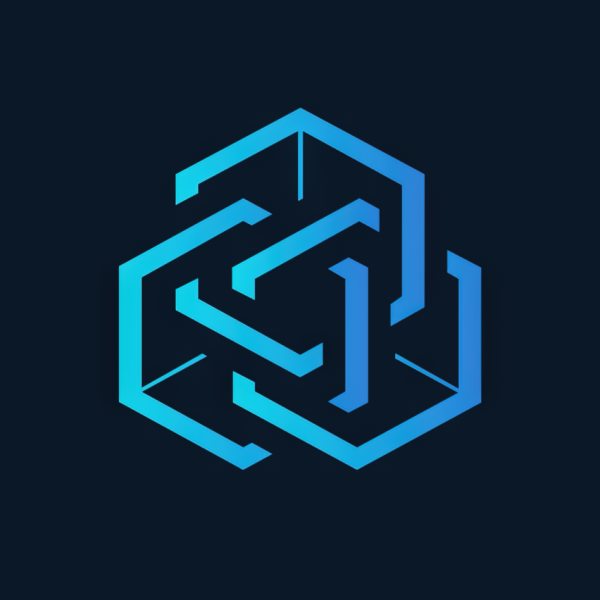
TORONTO, July 31, 2024 /PRNewswire/ – DeFi Technologies Inc. (the “DeFi Technologies”)Business” Or “DeFi Technologies“) (CBOE CA: DEFI) (GR: R9B) (OTC: DEFTF), a financial technology company pioneering the convergence of traditional capital markets with the world of decentralized finance (“Challenge“), is pleased to announce the appointment of Andrew Forson to its Board of Directors (the “Advice“).
Andrew Forson is a financial and risk engineer, software architect, and trusts and estates specialist. He currently serves as Head of Investments and Ventures for Hashgraph Group, the commercialization and enablement arm of Hedera, where he has been instrumental in driving strategic investments and driving innovation in the digital asset sector.
Mr. Forson brings a wealth of experience gained through his extensive background in developing structured financial products and his deep knowledge of the digital asset landscape. His expertise will be invaluable as DeFi Technologies continues to expand its suite of innovative financial products and services.
“We are thrilled to welcome Andrew to our Board of Directors,” said Olivier Roussy Newton, CEO of DeFi Technologies. “His extensive background in financial engineering and forward-thinking approach to digital assets will be a tremendous asset to our company as we continue to lead the way in the digital asset space.”
Andrew Forson holds an MBA from the prestigious Edinburgh Business School. His arrival on the board is part of DeFi Technologies’ drive to strengthen its management team and enhance its strategic capabilities in the evolving digital finance sector.
About DeFi Technologies
DeFi Technologies Inc. (CBOE CA: CHALLENGE) (GR: R9B) (OTC: DEFAULT) is a financial technology company that is at the forefront of the convergence of traditional capital markets with the world of decentralized finance (DeFi). By focusing on cutting-edge Web3 technologies, DeFi Technologies aims to provide investors with widespread access to the future of finance. Backed by a team of esteemed experts with extensive experience in financial markets and digital assets, we are committed to revolutionizing the way individuals and institutions interact with the evolving financial ecosystem. Join the DeFi Technologies digital community on Linkedin And Twitterand for more details visit https://defi.tech/
About Valour
Valor Inc. and Valor Digital Securities Limited (together, “Value“) issues exchange-traded products (“AND P”) that allow retail and institutional investors to access digital assets like Bitcoin simply and securely through their traditional bank account. Valor is part of DeFi Technologies Inc.’s (CBOE CA: CHALLENGE) (GR: R9B) (OTC: DEFAULT).
In addition to their new digital asset platform backed by physical media, which includes 1Valour Carbon Neutral Physical Bitcoin AND P, 1Valour Ethereum Physical StakingAnd 1Valor Internet Computer Physical StakingValour offers fully hedged digital asset ETPs with low to no management fees, with product listings on European exchanges, banks and brokerage platforms. Valour’s existing product range includes Valour Uniswap (United), Cardan (ADA), Peas (POINT), Solana (GROUND), Avalanche (AVAX), Cosmos (ATOM), Binance (BNB), Ripple (XRP), Toncoin (TONNE), Internet computer (PCI), Chain link (LINK), Heart (HEART), Close (CLOSE), Enjin (ENJ), Valor Bitcoin Staking (Bitcoin), Bitcoin Carbon Neutral (BTCN), Hedera (HBAR), Valor 10 Digital Asset Basket (VDAB10) And 1Valour STOXX Bitcoin Suisse Digital Asset Blue Chip ETPs with low management fees. Valour’s flagship products are Bitcoin Zero and Ethereum Zero, the first passive investment products fully hedged with Bitcoin (Bitcoin) and Ethereum (ETH) as underlyings which are completely free of fees.
For more information about Valour, to subscribe, or to receive updates and financial information, visit valor.com.
Caution regarding forward-looking information:
This press release contains “forward-looking information” within the meaning of applicable Canadian securities legislation. Forward-looking information includes, but is not limited to, the appointment of Mr. Forson; the regulatory environment regarding the growth and adoption of decentralized finance; the Company’s and its subsidiaries’ pursuit of business opportunities; and the potential merits or returns of such opportunities. Forward-looking information is subject to known and unknown risks, uncertainties and other factors that may cause the actual results, level of activity, performance or achievements of the Company, as the case may be, to be materially different from those expressed or implied by such forward-looking information. Such risks, uncertainties and other factors include, but are not limited to, the growth and development of the decentralized finance and digital asset industry; the rules and regulations relating to decentralized finance and digital assets; and general business, economic, competitive, political and social uncertainties. Although the Company has attempted to identify important factors that could cause actual results to differ materially from those contained in forward-looking statements, there may be other factors that cause results to differ from those anticipated, estimated or intended. There can be no assurance that such information will prove to be accurate, as actual results and future events could differ materially from those anticipated in such statements. Accordingly, readers should not place undue reliance on forward-looking statements. The Company undertakes no obligation to update forward-looking statements, except in accordance with applicable securities laws.
CBOE CANADA EXCHANGE ACCEPTS NO RESPONSIBILITY FOR THE ADEQUACY OR ACCURACY OF THIS RELEASE.
![]() Show original content to download multimedia:https://www.prnewswire.com/news-releases/defi-technologies-appoints-andrew-forson-to-board-of-directors-302210849.html
Show original content to download multimedia:https://www.prnewswire.com/news-releases/defi-technologies-appoints-andrew-forson-to-board-of-directors-302210849.html
SOURCE DeFi Technologies Inc.
DeFi
Is Zypto Wallet a Reliable Choice for DeFi Users?

Zypto wallet is a newcomer in the crypto landscape and has already made waves for its exclusive benefits and security features.
In this article, we will take a look at the Zypto crypto wallet and how it can help users securely manage their digital assets, interact with Web3 applications, and explore the world of Challenge.
What is Zypto Wallet?
Zypto App is a newly launched versatile crypto wallet that supports a wide range of coins and tokens, along with seamless access to Web3 applications, token exchanges, virtual crypto cards, a gift card marketplace, and a payment gateway.
What are the pros and cons of Zypto Wallet?
Benefits
- User-friendly: Zypto’s user interface is very intuitive with a simple setup process.
- Multi-Chain DEX Swaps: Zypto facilitates trading between thousands of cryptocurrencies, thanks to its versatile multi-chain token swap feature.
- Built-in dApp Browser: You can access Web3 applications directly in your wallet using the in-app dApp browser.
- Live Customer Support: The wallet has an in-app live customer support team that responds quickly to all your queries.
- Rewards Program: Zypto has a loyalty program that allows you to earn rewards, improving the overall user experience.
- Virtual crypto cards: The wallet makes it easy and reliable to use digital currencies for everyday transactions through its range of virtual cryptocurrency cards.
The inconvenients
- Limited analysis tools: Zypto offers advanced charting features and limited technical analysis tools that might not appeal to experienced cryptocurrency traders.
What DeFi products and services does Zypto Wallet offer?
Zypto allows you to securely manage a wide range of cryptocurrencies across multiple blockchains, acting as a user-friendly entry point into the Web3 ecosystem.
Multi-Chain Wallet
As a multi-chain wallet, Zypto supports hundreds of thousands of digital assets across different blockchains. Zypto is also committed to adding support for more chains in the coming months, expanding its universe of explorable assets.
Multi-Chain Exchange Functionality
Instead of the tedious process of selling one token on one exchange and buying another of the same type hosted on a different blockchain, Zypto offers a cross-chain swap feature.
DApp Browser
Another easy-to-use feature is the in-app dApp browser. Simply bring up the browser from the small globe icon at the bottom of your screen and it will first take you to the Zypto homepage.
The browser provides all the features under one application so you don’t miss anything that warrants opening a separate browser.
Zypto DeFi Wallet Review
User experience
Zypto’s ease of use is one of its main advantages. Once the app is downloaded, you can view your wallet from the home screen. Other buttons at the bottom of your screen will take you to prepaid virtual cards, an Explore Zypto page, where you can send, receive, exchange, buy and sell tokens, or access the dApp browser and your contact list.
Zypto requires KYC information before processing cards, as it is part of regulatory compliance. Contacts are another benefit: instead of tediously copying and pasting long addresses, simply save them under a contact name.
How to set up your Zypto wallet?
To start using Zypto, simply download the app. Once installed, you’re ready to go.
You can create a new wallet by pressing the Create Wallet button or import an existing wallet by writing (or pasting) your passphrase to verify your identity. You can also import it in read-only mode, in which case you only need the wallet name and address.
Conclusion: The Verdict
Zypto is relatively new in the DeFi space, but it’s already gaining popularity among different types of users. Those who prefer everything neatly organized in one place will find the app appealing, as will those who prefer its rich features and integration with fiat payment methods over on- and off-ramp cryptocurrencies.
DeFi
Switchboard Revolutionizes DeFi with New Oracle Aggregator
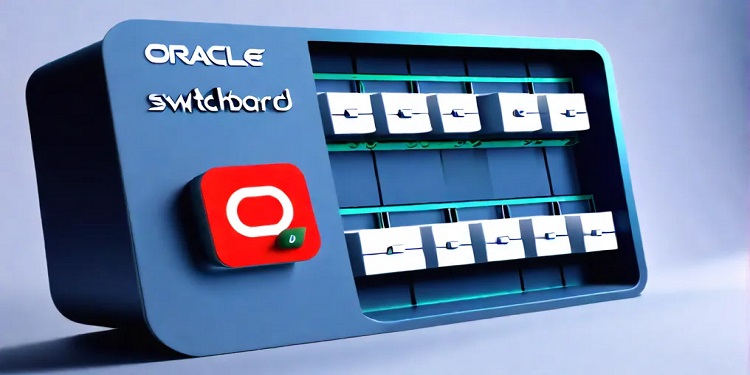
Switchboard, a leading oracle network known for its permissionless and fully customizable features, has launched a revolutionary oracle aggregator. This new tool enables seamless integration of data across multiple oracle networks, including household names like Chainlink and Pyth Network. In doing so, it provides users with access to a wide range of data sources, improving the versatility and reliability of decentralized finance (DeFi) applications.
Addressing security and cost challenges in DeFi
The Oracle Aggregator is designed to address significant security and cost challenges in the DeFi sector. In 2023, the Web3 industry saw losses exceeding $500 million due to price manipulation attacks, a notable increase from $403.2 million in 2022. These attacks accounted for 33% of the total value lost due to hacks. By expanding the diversity and volume of data sources, Switchboard aims to strengthen the resilience of data streams against such malicious activities, thereby improving the overall security of DeFi platforms.
Empowering developers with customizable data streams
Switchboard’s new Oracle Aggregator allows developers to design custom data feeds that draw from a wide range of sources, both within and outside of the Switchboard platform. This flexibility allows developers to create tailored feeds that meet their specific needs, moving away from rigid templates. The platform’s permissionless nature and lack of gatekeepers ensure developers have complete control over the data feeds they create.
Switchboard CEO Chris Hermida noted that the company’s philosophy has always been to empower developers rather than constrain them. By launching Oracle Aggregator, Switchboard allows developers to use data from a variety of sources, including Pyth and Chainlink, enabling innovation and customization of their projects. Hermida noted that this new capability allows developers to break away from traditional models and take a more personalized approach to data integration.
Plug-and-Play approach for enhanced security
Switchboard’s Oracle Aggregator offers a plug-and-play approach that allows users to leverage multiple Oracle networks, enhancing data security and reliability. By aggregating data from multiple sources, developers can improve the scalability and redundancy of their data feeds, setting a new industry standard as the first generalized Oracle aggregator. This scalability ensures that projects can mitigate risks associated with data manipulation and other vulnerabilities.
One of the most notable features of Oracle Aggregator is its customizable nature. Developers can selectively choose trusted data sources, eliminating those that do not meet their standards. This level of control is crucial for projects that aim to protect their operations from potential threats.
Innovative use of secure execution environments
Switchboard uses Trusted Execution Environments (TEEs) to ensure that data aggregation occurs entirely off-chain. This innovative approach minimizes gas costs associated with on-chain operations while preserving data integrity. Aggregated data is then shared with users in a single on-chain transaction, simplifying the process and reducing operational expenses.
Mitch Gildenberg, Switchboard’s CTO, highlighted the platform’s developer-centric design. He noted that the platform is designed to put developers in control, allowing them to fine-tune each data flow to their specific needs. This approach reflects Switchboard’s commitment to understanding and meeting developer needs.
Expansion and impact on the industry
Since its launch in 2021, Switchboard has seen significant growth, amassing over 180,000 users and achieving a total valuation of $1.6 billion. The company’s commitment to user autonomy and inclusion has been a driving force behind its rapid expansion in the Web3 ecosystem. Earlier this year, Switchboard raised $7.5 million in a Series A funding round co-led by Tribe Capital and RockawayX, with additional support from leading investors including the Solana Foundation, Aptos Labs, Mysten Labs, Subzero Ventures, and Starkware.
Conclusion
As the DeFi industry continues to evolve, tools like Switchboard’s Oracle Aggregator will play a crucial role in building robust and secure decentralized applications. By giving developers the ability to integrate and customize data feeds from multiple sources, Switchboard is setting new industry standards, driving innovation, and improving the overall security of the Web3 ecosystem.
DeFi
Bitcoin is the solution to inevitable hyperfinancialization

Disclosure: The views and opinions expressed here belong solely to the author and do not represent the views and opinions of the crypto.news editorial team.
If there is one thing that is becoming clear, it is that hyperfinancialization is inevitable, and our best chance of achieving it successfully is through Bitcoin (Bitcoin). This decentralized cryptocurrency, known for its fixed supply and robust security, offers a unique solution to the coming problem of wealth inequality and concentrated power. By embracing Bitcoin, we can create a more transparent and resilient financial future, or we risk losing our financial sovereignty to a handful of corporations.
The hyper-financialization of the world has already begun, with the financial sector becoming a relatively larger part of the economy, in terms of size and importance. Financial structures are also expanding rapidly in other sectors.
For example, in 2023, Americans spent more than $100 billion on state-run lotteries, according to According to The Economist, the poorest citizens spent huge amounts on tickets. In addition, the online sports betting market, valued at more than $100 billion, is projected to generate nearly $46 billion in revenue this year, with a user penetration rate of 3.9%.
Moreover, Robin HoodRobinhood, a commission-free investment platform popular with retail investors, saw its funded customers climb to 23.9 million and its assets under custody soar to $129.6 billion, another prime example of the hyper-financialization trend. Robinhood began to gain traction during the COVID-19 pandemic in 2020, and the hyper-financialization trend was exacerbated. For people stuck at home, the online world became their primary means of entertainment and social interaction.
Governments then injected billions of dollars into the market, encouraging people to bet their money on the markets. The subsequent surge in inflation and the weakness of the global economy further intensified this trend, with people having to bear the burden of survival.
This has led to an increased proliferation of financial structures in different spheres of life, meaning that both manufacturers and consumers are taking this route.
As we can see, cryptocurrency has grown from less than $150 billion in March 2020 to $2.7 trillion today. This explosive growth not only accelerates the trend towards the hyperfinancialization of finance with yield farming, resttaking, points, rewards and meme coins, but also that of art via NFTs, social dynamics via social tokens and platforms like Friendtech, game with play-to-win conceptsand physical assets through tokenization.
There are also prediction markets that allow people to bet on all sorts of events. These range from the outcome of the 2024 US presidential election to whether Bitcoin will hit $100,000 by the end of the year, whether Drake’s verse in “Wah Gwan Delilah” is an AI, what the opening weekend box office of “Bad Boys: Ride or Die” will be, or whether the Fed will raise rates this year.
This growing trend towards hyper-financialization is detrimental to society because it widens already large wealth gaps by increasing wealth concentration and contributing to economic inequality. Not to mention that it will lead to even larger asset bubbles, a focus on the short term at the expense of the long term, and an increased interest in speculative investments.
Here, cryptography can help find a better way to address hyperfinancialization. After all, the wealth is in the middlemen, and using blockchain technology removes this third party from the equation, bringing reliability, traceability, and immutability to the market. Blockchain actually allows hyperfinancialization to be fair and transparent.
Before the advent of cryptocurrencies, not everyone was allowed to participate in markets. But through disintermediation and permissionlessness, cryptocurrencies have made markets more efficient and accessible. Not to mention, everyone gains full control over their data, mitigating the risk of data manipulation and privacy violations.
This is where Bitcoin offers the perfect solution. This decentralized peer-to-peer network enables financial inclusion and censorship resistance, which is critically important in today’s world where organizations and governments are encroaching on people’s rights. This network has a decade-and-a-half-old history behind it, providing a robust and secure platform for people to achieve financial sovereignty.
This trillion-dollar asset class also serves as a hedge against inflation, allowing holders to preserve their wealth over time. Unlike fiat currencies, which are devalued by politicians, Bitcoin’s fixed supply and decentralization protect it from such pressures, making it the perfect asset to own in a world where everyone is competing to extract value.
The largest crypto network is now also seeing experimentation, as developers and investors use it as a foundation to build a truly decentralized future of finance and value.
For so long, Bitcoin has been a low-activity blockchain, with its key role being to store value. While Bitcoin has played a passive role in the blockchain world for all these years, it has finally changed with Taproot Upgrade which brought NFTs into the Bitcoin world. Then there was a growing interest in tokenization, also from institutions like Blackrock.
This drive to expand Bitcoin’s utility has sparked a wave of innovation, and the day is not far when BTC could dethrone Ethereum as the go-to blockchain for decentralized finance. Several aspects, including Bitcoin’s robust security framework, widespread acceptance, and institutional interest, position Bitcoin at the forefront of defi innovation.
So, with these developments, Bitcoin is now evolving to begin its new era of utility and innovation after realizing its original vision of being a peer-to-peer electronic currency system.
As everything becomes a financial asset and tradable, attention, which is a scarce resource, will become even more crucial. Bitcoin has already cemented its position in the attention economy, and the newfound interest in regulatory complaints and widespread adoption of BTC to boost productivity will allow it to lead the future of digital economies. This portends a world where crypto leads the charge towards hyperfinancialization, with BTC in the driver’s seat.
So, to conclude, the resilient Bitcoin network that has spectacularly survived the test of time may have started as a means to facilitate the seamless flow of monetary value, but today, it has become a foundation of hope not only to protect against a future that is going to be super fixated on the financial aspect, but also to take advantage of it to create wealth and prosper.
Jeroen Develter
Jeroen Develter is the Chief Operating Officer at Persistence Labs and a seasoned professional in financial and tech startup environments. With a decade of international consulting, management, entrepreneurship and leadership experience, Jeroen excels at analyzing complex business cases, establishing streamlined operations and creating scalable processes. With Persistence, Jeroen oversees all product and engineering efforts and is deeply passionate about improving the adoption of Bitcoin defi, or BTCfi, and using intents to develop scalable, fast, secure and user-friendly solutions. His work at Persistence Labs addresses the significant interoperability challenges between Bitcoin L2s. In addition, Jeroen is also a co-host of the Stacked Podcast, a platform to gain knowledge about Bitcoin and cryptography from prominent Bitcoin creators.
-
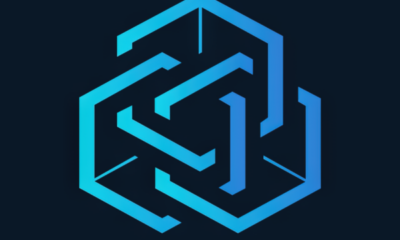
 DeFi11 months ago
DeFi11 months agoDeFi Technologies Appoints Andrew Forson to Board of Directors
-

 Fintech11 months ago
Fintech11 months agoUS Agencies Request Information on Bank-Fintech Dealings
-

 News12 months ago
News12 months agoBlock Investors Need More to Assess Crypto Unit’s Earnings Potential, Analysts Say — TradingView News
-
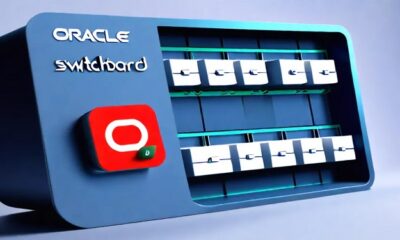
 DeFi11 months ago
DeFi11 months agoSwitchboard Revolutionizes DeFi with New Oracle Aggregator
-

 DeFi11 months ago
DeFi11 months agoIs Zypto Wallet a Reliable Choice for DeFi Users?
-

 News12 months ago
News12 months agoBitcoin and Technology Correlation Collapses Due to Excess Supply
-

 Fintech11 months ago
Fintech11 months agoWhat changes in financial regulation have impacted the development of financial technology?
-
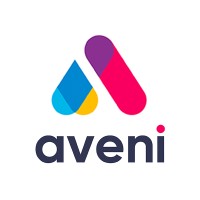
 Fintech11 months ago
Fintech11 months agoScottish financial technology firm Aveni secures £11m to expand AI offering
-
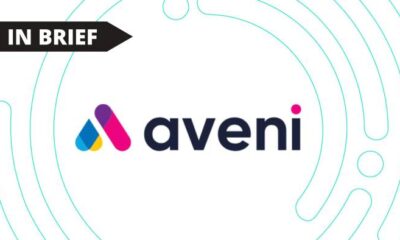
 Fintech11 months ago
Fintech11 months agoScottish financial technology firm Aveni raises £11m to develop custom AI model for financial services
-
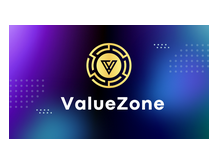
 News1 year ago
News1 year agoValueZone launches new tools to maximize earnings during the ongoing crypto summer
-

 Videos5 months ago
Videos5 months ago“Artificial intelligence is bringing us to a future that we may not survive” – Sco to Whitney Webb’s Waorting!
-
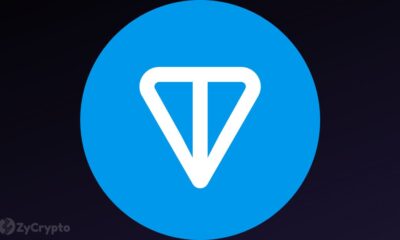
 DeFi1 year ago
DeFi1 year agoTON Network Surpasses $200M TVL, Boosted by Open League and DeFi Growth ⋆ ZyCrypto





